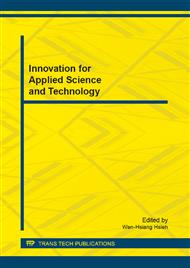p.2142
p.2147
p.2152
p.2157
p.2162
p.2167
p.2171
p.2176
p.2181
New Type Small-Angle Sensor Based on Multiple Total Internal Reflections and Attenuated Total Reflections in Heterodyne Interferometry
Abstract:
In this paper, a new type small-angle sensor based on multiple total internal reflections and attenuated total reflections in heterodyne interferometry is presented. The small-angle sensor is designed as a reflective elongated prism that is made of BK7 glass. The shorter-side surface of the reflective elongated prism was coated with 2nm Ti-film and 45.5nm Au-film, but the longer-side surface of that was not coated with metal films. With the new type small-angle sensor, the small rotation angle can be obtained only by measuring the phase difference between the p-and s-polarization lights due to the multiple attenuated total-internal reflections (MATRs) and total-internal reflections (TIRs) effects. Its angular resolution can reach 0.000000295 radian at least. The new type small-angle sensor has some merits, e.g., high resolution, high sensitivity, stability, and in real-time test, etc.
Info:
Periodical:
Pages:
2162-2166
Citation:
Online since:
January 2013
Authors:
Price:
Сopyright:
© 2013 Trans Tech Publications Ltd. All Rights Reserved
Share:
Citation:


